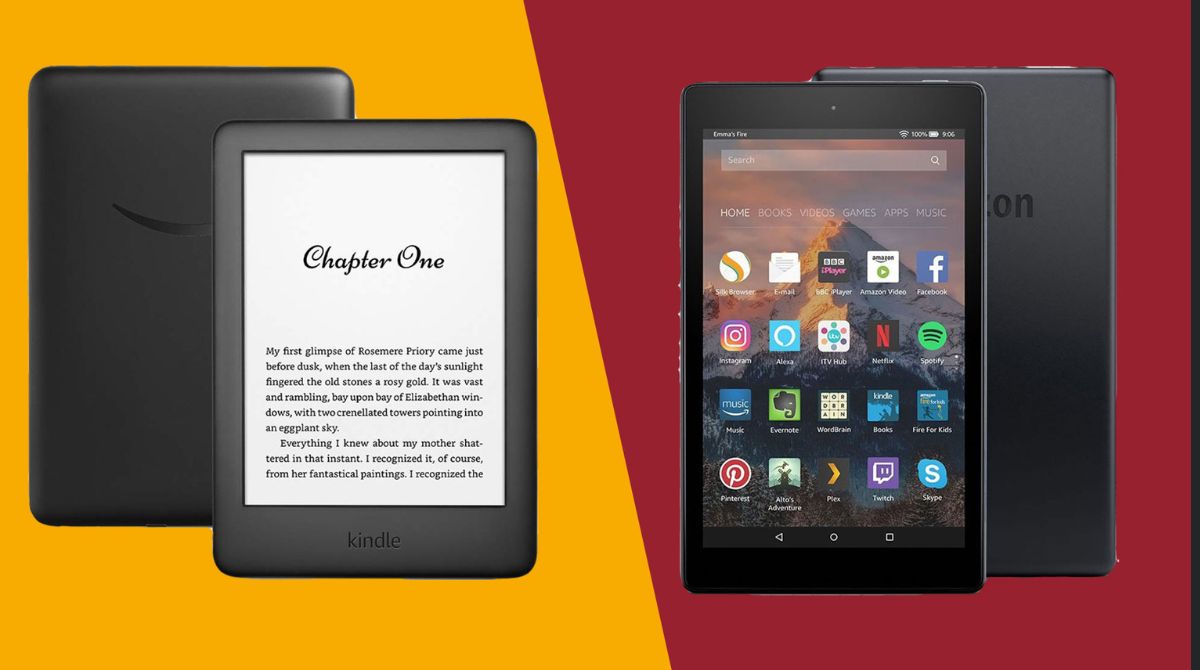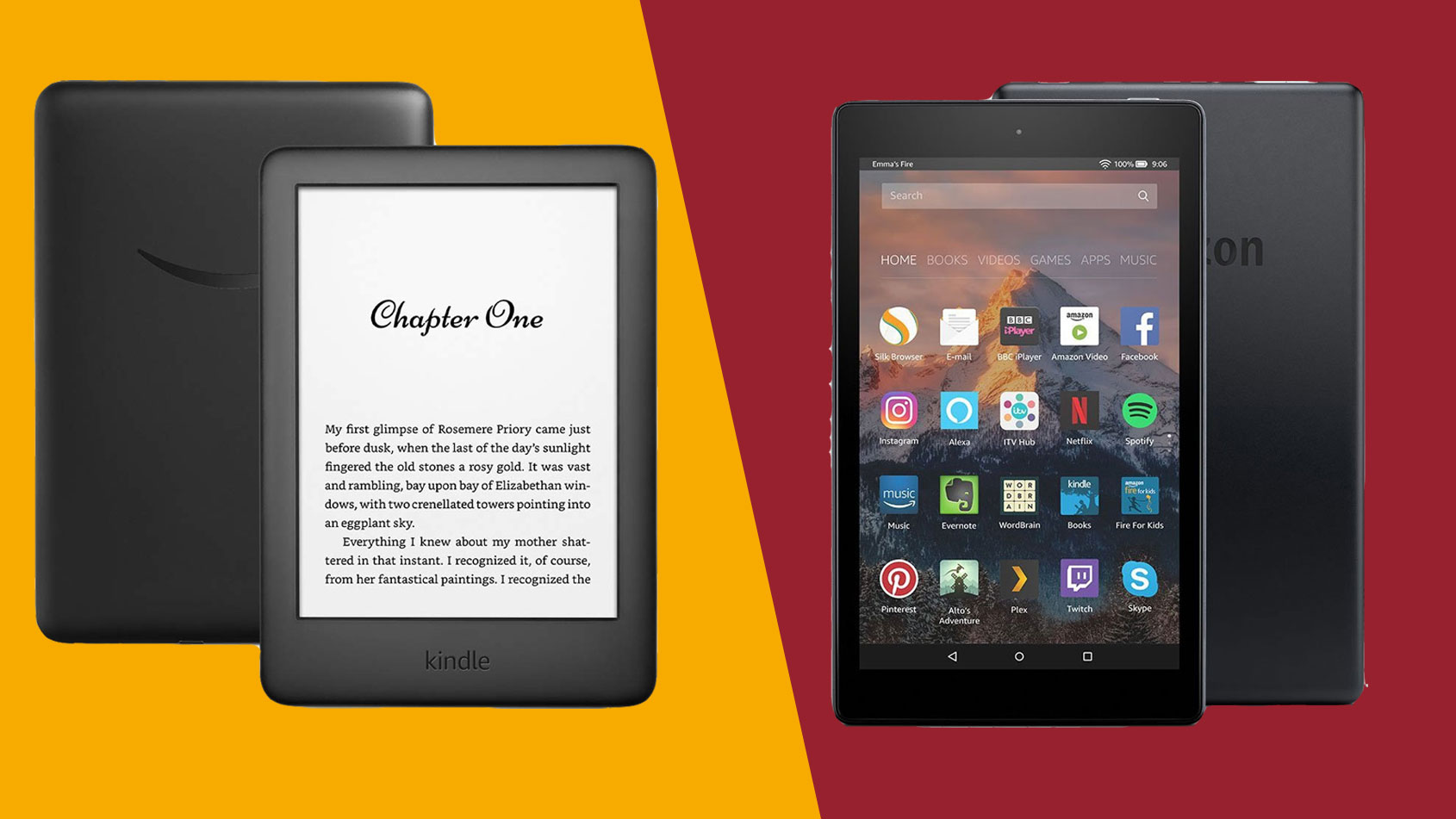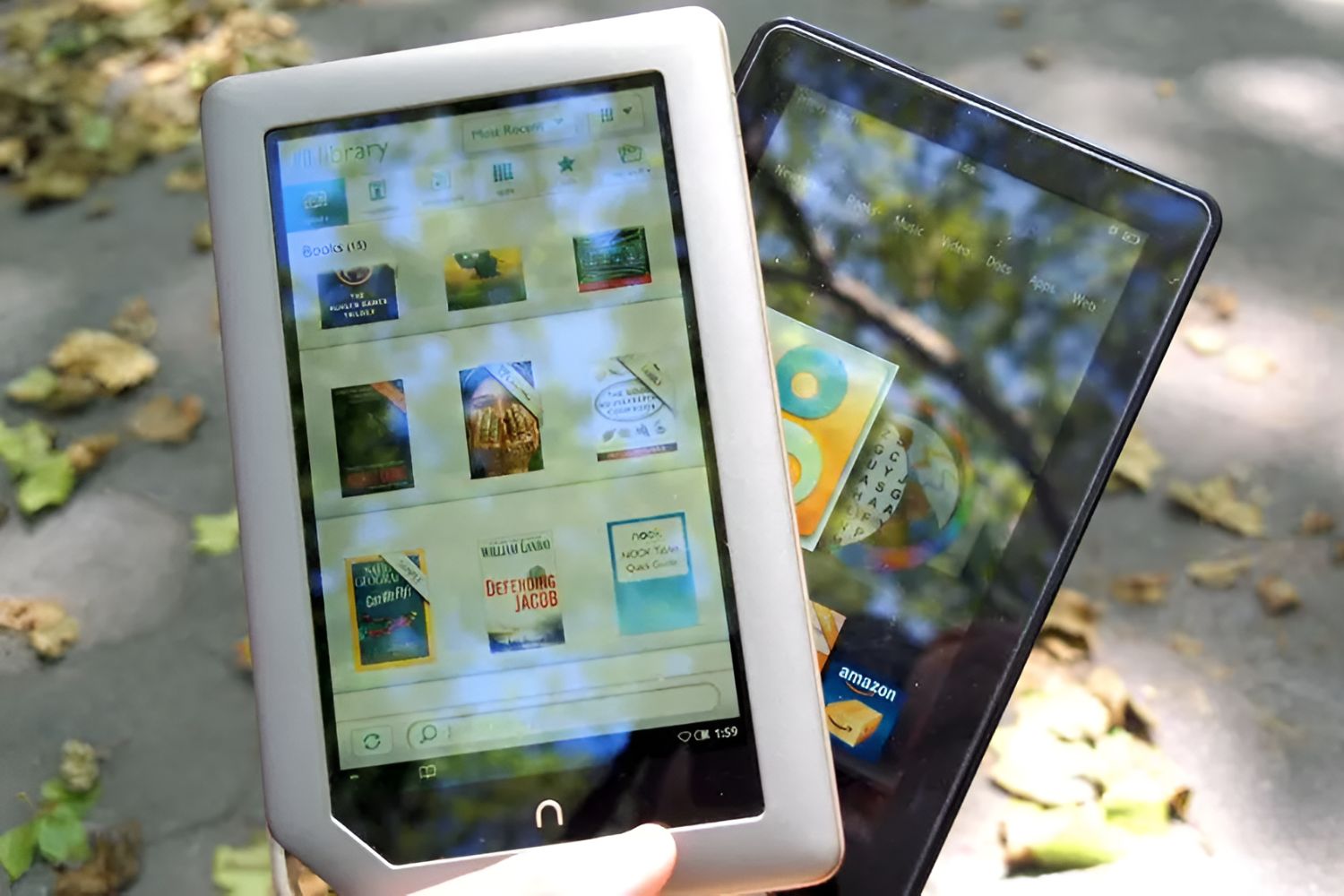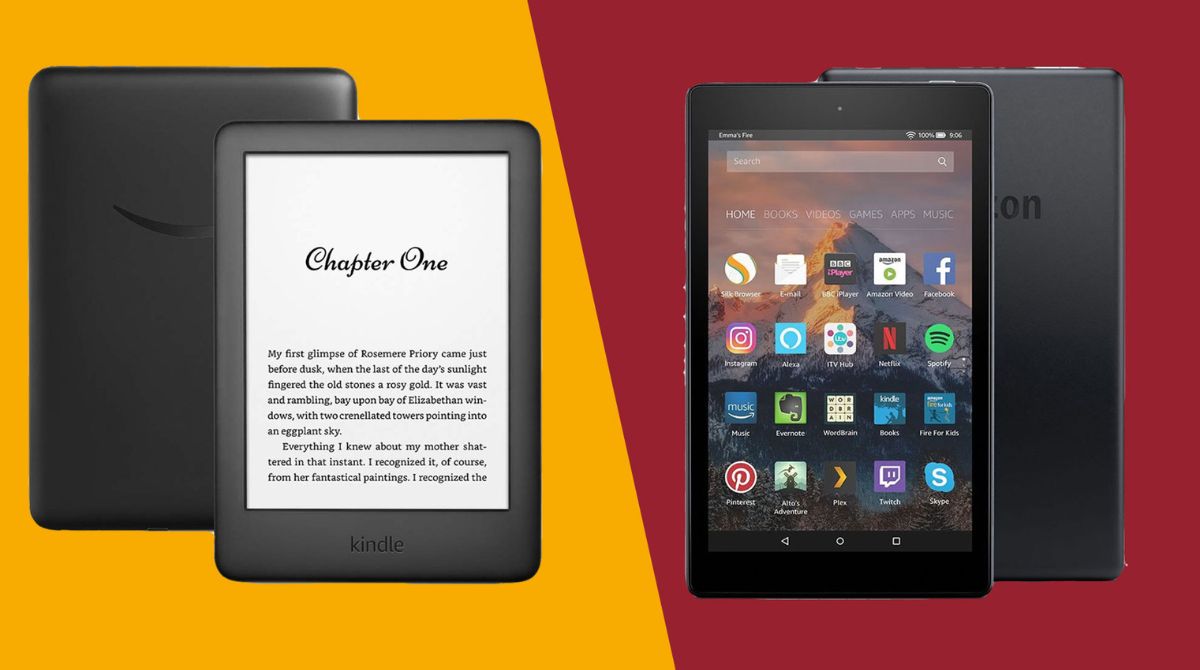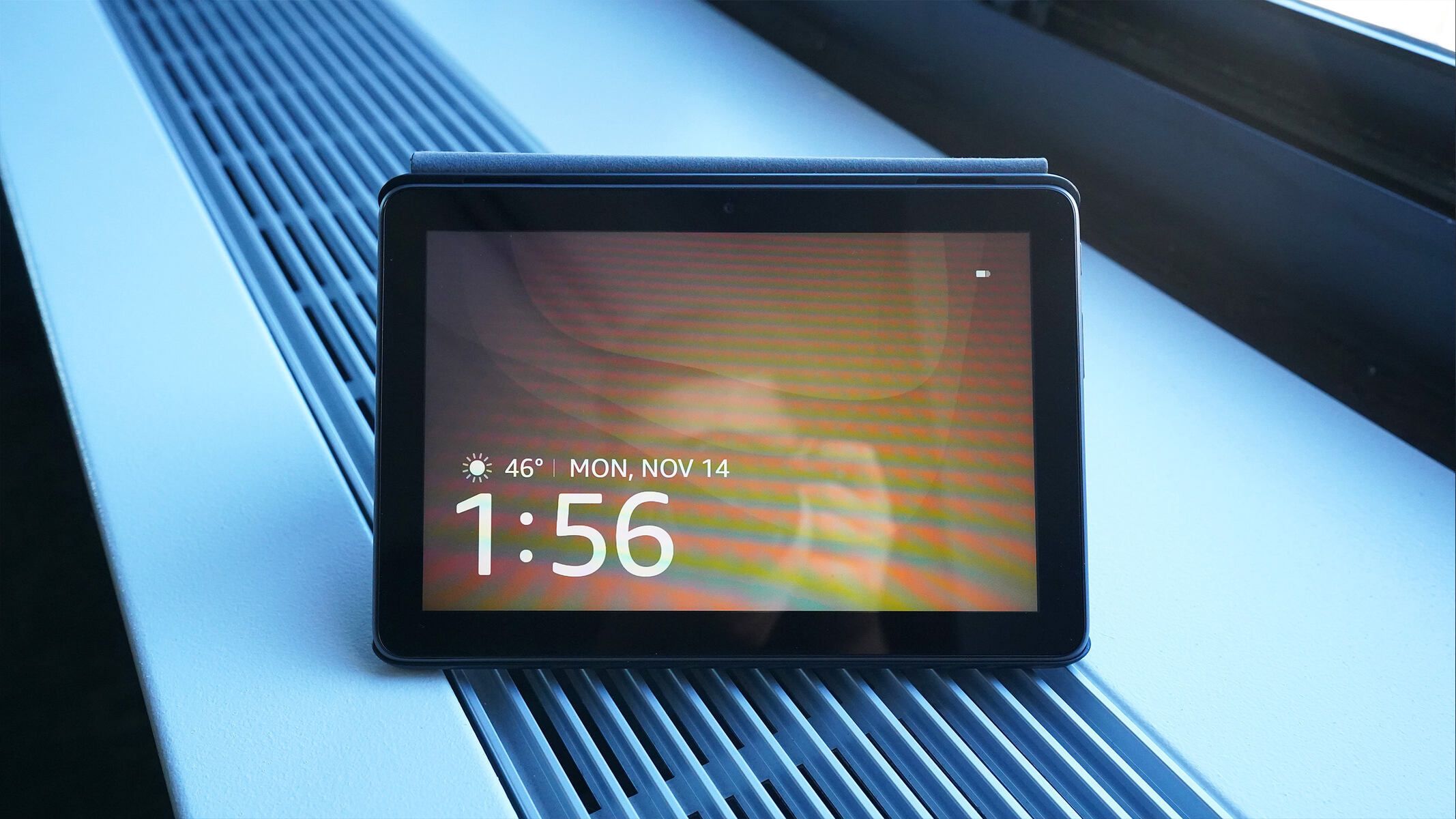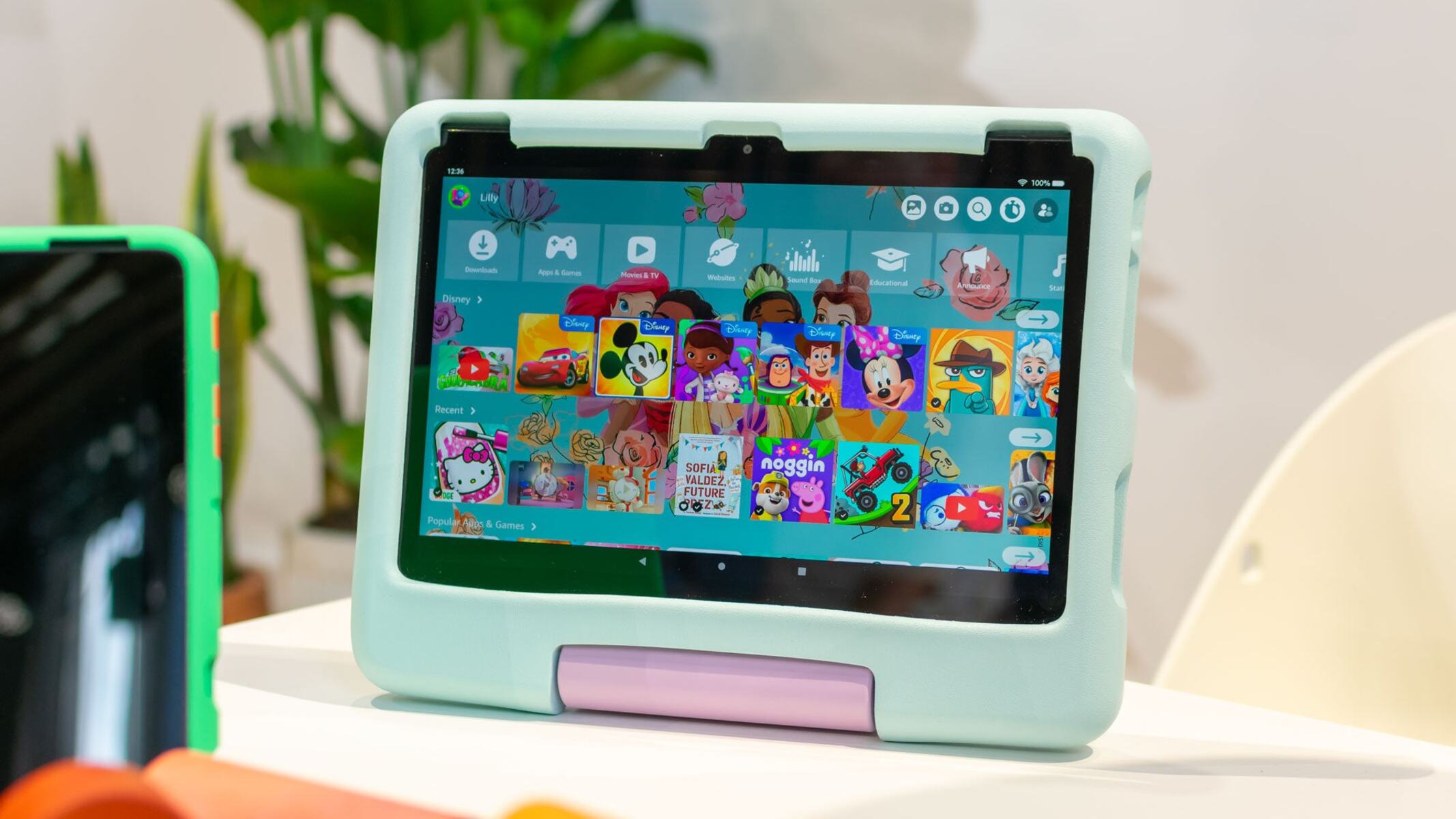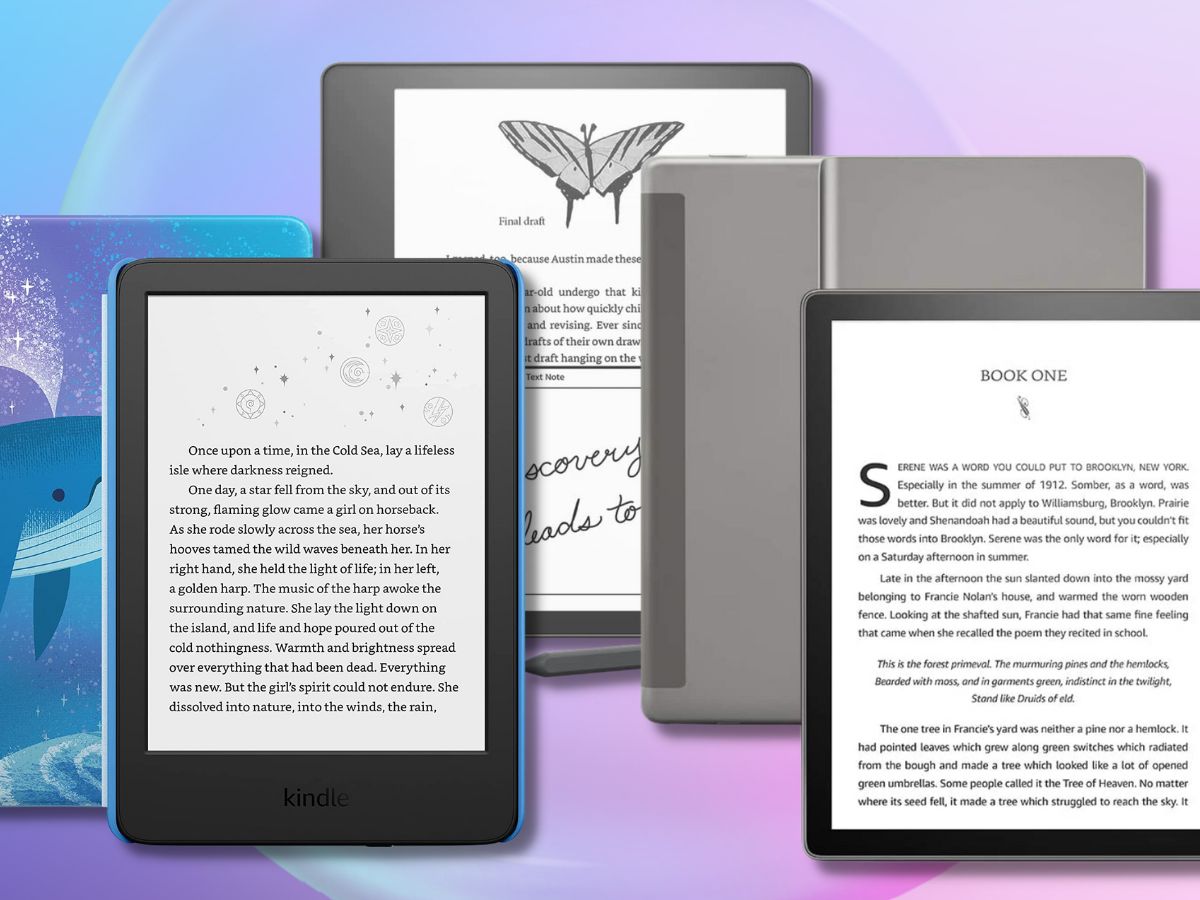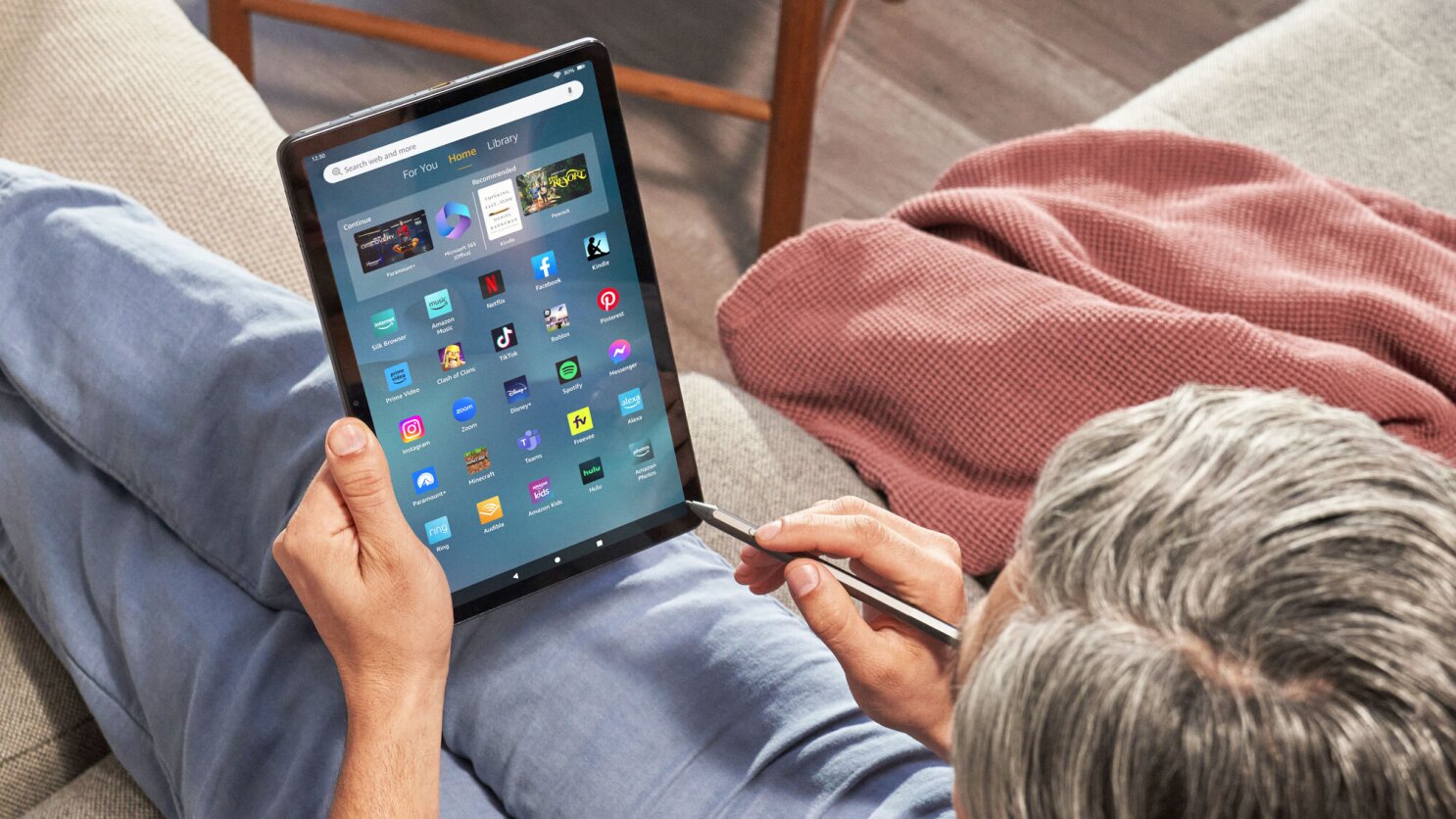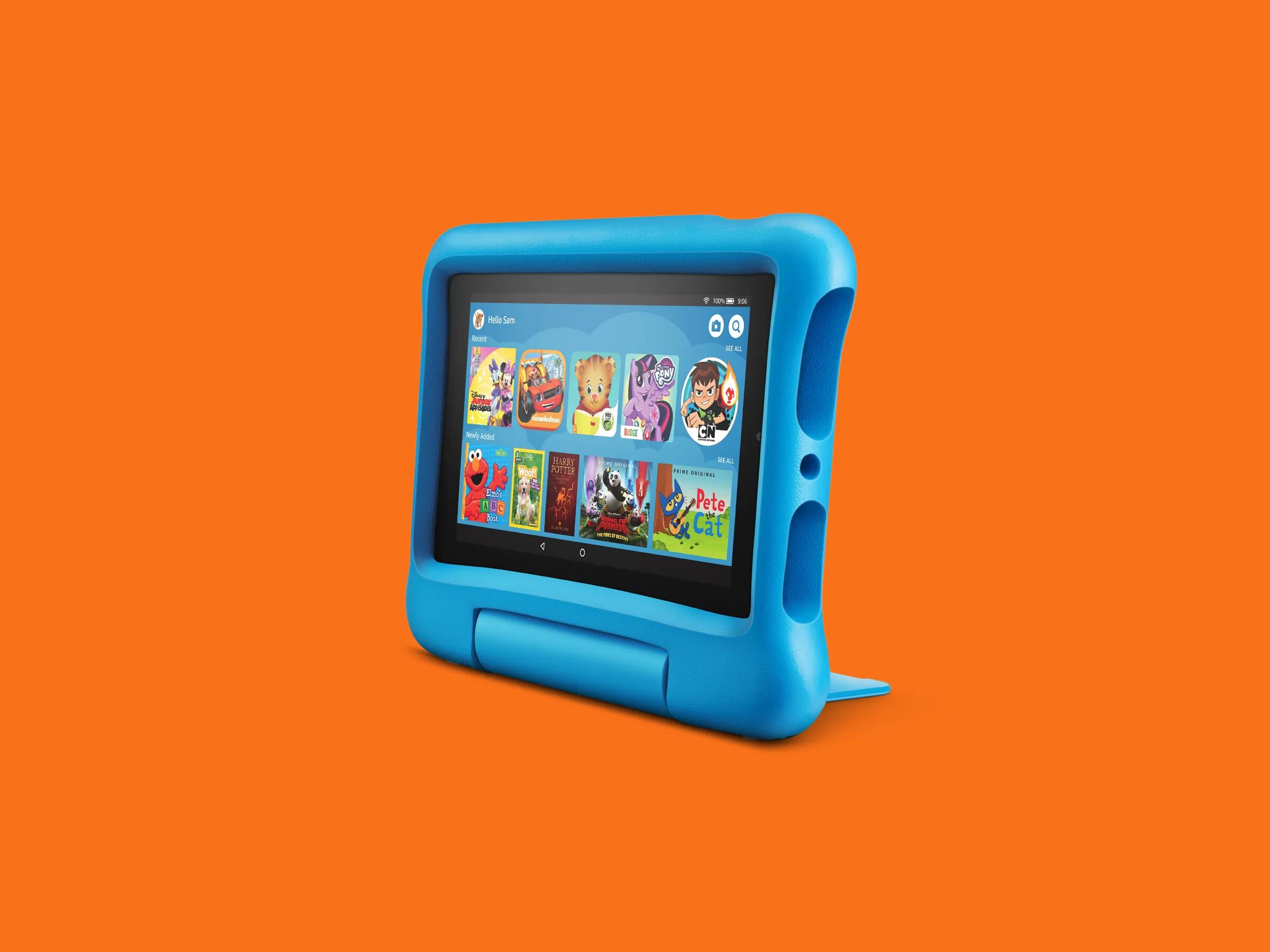Introduction
Welcome to the tech debate of the century: Kindle or tablet – which is better? With the rise of e-books and digital reading, many avid bookworms and tech enthusiasts find themselves torn between the two devices. Both serve their own unique purposes, and choosing between them depends on your specific needs and preferences.
The Kindle, as a dedicated e-reader, is known for its seamless reading experience and focus on providing a distraction-free environment. On the other hand, tablets offer a broader range of functionalities, including multimedia entertainment and access to a plethora of apps.
In this article, we will delve into the key factors to consider when deciding between a Kindle and a tablet. From cost considerations to reading experience, portability to battery life, we will examine the various aspects that impact the decision-making process.
Whether you’re an avid reader, a multimedia junkie, or a combination of both, read on to find out which device suits your needs best. Let’s dive into the comparison of Kindle versus tablet.
Cost Comparison
When considering the purchase of a device, cost is often a major factor in the decision-making process. Kindles and tablets come in a range of price points, each with its own set of features and capabilities.
Kindles, being dedicated e-readers, are generally more affordable than tablets. The entry-level Kindle models, such as the Kindle Paperwhite or Kindle Oasis, offer a straightforward reading experience at a budget-friendly price. These devices typically range from $90 to $250, depending on the specific model and any additional features.
On the other hand, tablets come in a wider variety of price ranges. Budget-friendly options such as Amazon Fire tablets or entry-level Android tablets can start as low as $50. However, if you prefer high-end, feature-rich tablets like the iPad Pro or Samsung Galaxy Tab, you can expect to shell out anywhere from $400 to $1,000.
It’s important to consider your usage and needs when evaluating the cost of these devices. If your primary focus is reading, a Kindle may be the more cost-effective option. However, if you require a device that offers a range of functionalities beyond reading, a tablet may be worth the investment.
Additionally, it’s worth considering any ongoing costs associated with the device. Kindles typically offer access to a vast library of free or low-cost e-books, while tablets may require subscriptions to e-book platforms or digital content providers. Take these factors into account to make an informed decision about the overall cost of owning a Kindle or a tablet.
Portability and Convenience
When it comes to portability and convenience, the size and weight of a device play a significant role in determining its ease of use in various situations. Kindles are designed with lightweight and compact form factors, making them highly portable and easy to carry around.
A typical Kindle weighs around 6 to 7 ounces, making it much lighter than most tablets on the market. This makes it a perfect companion for frequent travelers or those who enjoy reading on the go. Kindles can easily fit into a bag or even a small purse, ensuring that your reading material is always within reach.
Tablets, on the other hand, tend to be larger and heavier due to their additional functionalities and larger screens. While modern tablets have become more lightweight compared to their predecessors, they are still bulkier than Kindles. This can make them less convenient to carry around, especially for extended periods.
Moreover, Kindles have an advantage in terms of battery life. Thanks to their e-ink displays, which consume little power, Kindles can last for weeks on a single charge. This means you won’t have to worry about frequently charging your device during your travels or outings. Tablets, on the other hand, often need to be charged on a daily or every few days basis, depending on your usage.
Another aspect to consider is the ease of reading outdoors. Kindles use e-ink technology that mimics the feel of ink on paper, resulting in a glare-free reading experience even in direct sunlight. Tablets, with their backlit LCD screens, may struggle with glare and reflections, making reading outdoors more challenging.
Ultimately, if you prioritize portability, lightweight design, and extended battery life, a Kindle would be your best bet. However, if you require a device with a larger screen and don’t mind the added weight, a tablet may be more suitable, especially if you plan to use it for a range of activities beyond reading.
Reading Experience
One of the primary considerations when choosing between a Kindle and a tablet is the quality of the reading experience. Kindles are specifically designed for reading, aiming to replicate the feel of reading a physical book as closely as possible.
The key feature that sets Kindles apart is their use of e-ink technology. This technology creates a display that mimics the appearance of ink on paper, resulting in a comfortable reading experience that reduces eye strain. The display is non-reflective and can be read in direct sunlight without glare, making it ideal for outdoor reading.
In addition, Kindles offer adjustable font sizes, font styles, and line spacing, allowing you to customize the reading experience according to your preferences. Many Kindles also have built-in lighting, ensuring that you can read in low-light conditions without the need for a separate reading light.
Tablets, on the other hand, typically utilize LCD or OLED screens that are backlit, offering vibrant colors and sharp display quality. While this is advantageous for multimedia consumption and app usage, it may not provide the same reading experience as e-ink displays. LCD screens can cause eye strain over prolonged reading sessions, especially in low-light environments.
Furthermore, Kindles have a built-in dictionary feature that allows you to look up definitions of words with a simple touch, making it easy to expand your vocabulary while reading. Some models also offer features like X-Ray, which provide additional information and insights about characters, places, and themes mentioned in the book.
While tablets offer the advantage of being able to access a wider range of reading apps, including e-reader apps like Kindle, they may not provide the same immersive experience as dedicated e-readers. The distractions of notifications and other apps can disrupt your reading flow and make it harder to focus.
Ultimately, if your primary focus is reading and you value a distraction-free and comfortable reading experience, a Kindle is the superior choice. However, if you enjoy reading but also want the flexibility of accessing other multimedia content and apps, a tablet may be a more suitable option.
Multimedia and Entertainment
While Kindles excel in providing a dedicated and immersive reading experience, tablets offer a wide range of multimedia and entertainment options beyond just reading. Tablets are essentially mini-computers, capable of running various apps and multimedia content.
With a tablet, you can access streaming services like Netflix, Hulu, or Disney+ to enjoy movies and TV shows. The larger screens and vibrant displays of tablets enhance the viewing experience, making it more enjoyable for multimedia consumption.
In addition to video streaming, tablets also offer access to music streaming apps like Spotify or Apple Music, allowing you to create personalized playlists and enjoy your favorite tunes. Some tablets even have built-in speakers or support external speakers, enhancing the audio experience.
Moreover, tablets provide access to a wide array of gaming apps, opening up a world of entertainment opportunities. Whether you prefer casual puzzle games or immersive 3D adventures, tablets offer a more diverse and interactive gaming experience compared to Kindles.
Another advantage of tablets is their compatibility with productivity and creative apps. Whether you’re editing documents, creating art, or using productivity tools, tablets provide a more versatile and expansive platform compared to Kindles.
While Kindles may offer limited multimedia capabilities, such as playing audio books or displaying simple graphics, they are primarily focused on providing a dedicated reading experience. If your entertainment needs extend beyond reading and you enjoy consuming other forms of multimedia content, then a tablet would be the better choice.
It’s worth noting, however, that prolonged multimedia consumption on tablets can drain their battery quickly. If your primary goal is leisure reading, a Kindle’s long battery life and distraction-free environment may be more suitable.
Ultimately, when considering multimedia and entertainment capabilities, tablets undoubtedly have the upper hand, providing a wider range of options for enhanced entertainment experiences. However, if your main priority is reading and you don’t require extensive multimedia features, a Kindle may be all you need to satisfy your literary cravings.
Display and Screen Time
The quality of the display and the amount of screen time a device can offer are important considerations when choosing between a Kindle and a tablet.
Kindles utilize e-ink displays, which provide a paper-like reading experience. This technology offers excellent visibility, even in direct sunlight, and minimizes eye strain during long reading sessions. The e-ink display also consumes significantly less power compared to the LCD or OLED screens found in tablets, resulting in an extended battery life.
However, one drawback of e-ink displays is the lack of color. Kindles typically display content in grayscale, making them less suitable for reading books that heavily rely on colorful illustrations or graphics. If you plan on reading comic books, graphic novels, or magazines with vibrant visuals, a tablet’s color display would be more suitable.
Tablets boast color displays that offer vibrant, high-resolution visuals. These displays are ideal for multimedia consumption, such as watching movies, browsing social media, or gaming. Tablets also provide the ability to adjust screen brightness and color settings to suit your preferences and the environment.
On the downside, the backlit LCD or OLED screens found in tablets can cause eye strain over prolonged screen time, particularly in low-light conditions. Kindles, with their non-reflective e-ink displays, are more comfortable for reading at night or in dimly lit areas.
In terms of screen time, Kindles have a distinct advantage. Due to the low power consumption of e-ink displays, a Kindle can last for weeks on a single charge, even with regular daily usage. This means you can immerse yourself in books and reading without constantly worrying about finding a power outlet. Tablets, on the other hand, typically require daily charging, especially with heavy usage of multimedia and app usage.
Keep in mind that regular screen time and exposure to blue light emitted by tablets can disrupt sleep patterns and affect overall well-being. If you plan on using your device primarily for reading and want to minimize screen time, a Kindle’s e-ink display and longer battery life are more conducive to a healthy reading routine.
However, if you value vibrant visuals, color display, and the option to enjoy a range of multimedia content with a shorter battery life, a tablet would be a better fit for your needs.
Battery Life
Battery life is an essential consideration when choosing between a Kindle and a tablet, as it directly impacts the device’s usability and convenience. Kindles are renowned for their impressive battery life, setting them apart from most tablets on the market.
Kindles utilize e-ink displays, which consume significantly less power compared to the LCD or OLED screens found in tablets. As a result, Kindles can last for weeks on a single charge with regular daily usage. This extended battery life is a significant advantage, particularly for avid readers who enjoy long reading sessions without interruptions.
The low power consumption of Kindles means you won’t have to worry about recharging your device frequently, which is especially convenient during travel or when you don’t have access to power outlets. You can enjoy uninterrupted reading without the constant need to find a power source.
In contrast, tablets typically have shorter battery lives, especially with heavy usage of multimedia, gaming, and app usage. Depending on the intensity of usage, tablets generally need to be charged on a daily or every few days basis. This can become inconvenient, particularly if you rely heavily on your tablet for various activities.
Additionally, tablets tend to consume more power when streaming videos or playing graphical-intensive games, which can further drain the battery quickly. If you plan on engaging in extensive multimedia consumption or gaming, it’s important to keep this in mind and plan for regular recharging.
It’s worth noting that certain tablet models offer battery-saving features and power management options to extend their usage time. However, even with these features, tablets still typically fall short of the impressive battery life provided by Kindles.
Ultimately, if long battery life is a priority for your reading or on-the-go needs, a Kindle is the clear winner. Their e-ink displays and optimized power consumption allow for extended usage without the need for frequent charging. On the other hand, if you require a device with a broader range of functionalities beyond reading and are willing to accept shorter battery life, a tablet may be the better choice for you.
App and Content Availability
When considering a Kindle or a tablet, it’s important to evaluate the availability of apps and content on each device. Kindles, being dedicated e-readers, primarily focus on providing access to a vast library of e-books.
With a Kindle, you have direct access to the Amazon Kindle Store, which offers an extensive collection of e-books across various genres. Many e-books are available for purchase, while others can be borrowed through Kindle Unlimited or Prime Reading subscriptions. Additionally, Kindles support popular e-book formats like MOBI and PDF, allowing you to sideload books from other sources.
However, it’s important to note that Kindles have limited app availability compared to tablets. They do not support popular app stores like the Google Play Store or Apple App Store. While there are some apps available through the Amazon Appstore, the selection is significantly smaller, and it primarily focuses on productivity tools and basic utilities, rather than a wide range of entertainment or gaming options.
On the other hand, tablets offer access to a vast array of apps, games, and other digital content through their respective app stores. Both Android tablets and iPads have access to a wide selection of apps, including e-reader apps like Kindle, Nook, or Kobo, allowing you to enjoy your e-book library from multiple platforms.
Tablets also provide access to popular streaming services, social media platforms, productivity tools, and a wide range of entertainment apps. Whether you’re looking to stream movies, listen to music, play games, or get work done on the go, tablets offer a broader ecosystem of apps to cater to your needs.
Additionally, tablets allow for customization and personalization, enabling you to choose from various themes, backgrounds, and home screen layouts. This flexibility can enhance the overall user experience and make the device feel more personalized to your preferences.
If you’re someone who enjoys the flexibility of accessing a wide range of apps and digital content beyond just e-books, a tablet would be the more suitable option. However, if your main focus is reading and you’re content with exploring the extensive e-book library offered by Amazon, a Kindle could be the ideal choice.
Functionality and Customization
When comparing a Kindle and a tablet, it’s important to consider the functionality and customization options offered by each device. Tablets generally provide a broader range of features and functionalities beyond dedicated reading, giving them an edge in terms of versatility.
Tablets are essentially mini-computers that offer a variety of capabilities. They allow you to browse the internet, send emails, access social media, edit documents, and perform other tasks commonly associated with traditional computers. This versatility makes tablets suitable for both work and leisure activities, providing a more comprehensive digital experience.
In terms of customization, tablets offer a higher level of flexibility. You can customize the home screen layout, add widgets, and arrange app icons to suit your preferences. This level of personalized customization allows you to design the device’s interface to your liking, making it feel more tailored to your needs and preferences.
Furthermore, tablets enable multitasking, allowing you to use multiple apps simultaneously. Whether you’re taking notes while reading, watching a video while browsing the web, or responding to emails while listening to music, tablets provide a seamless multitasking experience. This functionality enhances productivity and efficiency, especially for individuals who require multitasking capabilities.
On the other hand, Kindles are primarily designed for reading and offer a more focused and distraction-free experience. While they may lack the versatility and customization options of tablets, this simplicity can be beneficial, especially for those who want to immerse themselves in books without the distractions of notifications or other apps.
Additionally, Kindles have features specifically tailored to enhance the reading experience, such as adjustable font sizes, font styles, and line spacing. This level of customization allows you to personalize the reading experience to your liking, ensuring optimal comfort and legibility.
While Kindles lack the same level of functionality and customization as tablets, they excel in their intended purpose – providing an exceptional reading experience. If your primary focus is dedicated reading and you value a distraction-free environment, a Kindle would be the ideal choice.
However, if you require a device with a broader range of functionalities and the ability to customize the interface and multitask, a tablet would better suit your needs. Tablets provide the flexibility to adapt to various tasks and activities, making them a more versatile choice for individuals who want a device that can handle both work and entertainment.
Overall Decision
After carefully examining the various factors, including cost, portability, reading experience, multimedia capabilities, display, battery life, app availability, and functionality, it’s time to make an overall decision between a Kindle and a tablet.
If your primary focus is reading and you value a dedicated and immersive reading experience, with a device that mimics the feel of ink on paper and offers long battery life, then a Kindle is the clear choice. Kindles are designed to provide a distraction-free and comfortable environment for reading, making them perfect for bookworms who prefer a seamless reading experience without the added bells and whistles.
On the other hand, if you enjoy a broader range of activities beyond reading, such as multimedia consumption, gaming, productivity, or customization, then a tablet is the more suitable option. Tablets provide access to a vast library of apps, a full-color display, versatility for multitasking, and customization options, making them ideal for those who want a device that can handle various tasks and entertainment options.
It’s important to evaluate your specific needs, preferences, and budget when making this decision. Consider what matters most to you – whether it’s the joy of getting lost in a book or the versatility of a device that can offer entertainment, productivity, and customization.
Ultimately, there is no clear-cut answer as to which device is better. It depends on your individual requirements and the experiences you prioritize. Both Kindles and tablets have their own strengths and weaknesses, and the decision comes down to what aligns best with your preferences and goals.
Take the time to weigh the pros and cons, consider your usage patterns, and think about how you plan to use the device. This thoughtful evaluation will help you make a well-informed decision that matches your needs and provides the most enjoyable user experience.
Conclusion
Choosing between a Kindle and a tablet ultimately comes down to your personal preferences and needs. Both devices offer unique advantages and cater to different use cases.
If your primary focus is reading and you want a device that replicates the feel of ink on paper, offers a distraction-free environment, and provides a long battery life, then a Kindle is the ideal choice. Kindles excel in providing an exceptional reading experience and are designed specifically for bookworms who enjoy immersing themselves in literature.
On the other hand, if you seek a more versatile device that goes beyond reading and offers a broader range of functionalities, such as multimedia consumption, gaming, productivity, and customization, then a tablet is the better option. Tablets provide access to a vast library of apps, vibrant displays, multitasking capabilities, and customization options, making them suitable for both work and entertainment purposes.
Ultimately, your decision should be based on your priorities, budget, and intended usage. Consider factors like cost, portability, reading experience, display, battery life, app availability, and functionality. Think about how you plan to use the device, whether it’s for dedicated reading, multimedia consumption, or a combination of activities.
Remember that there is no definitive “better” device – it all depends on your specific needs and preferences. Whether you choose a Kindle or a tablet, both can enhance your digital experience and provide entertainment and knowledge at your fingertips.
Take the time to evaluate your requirements, test out different devices if possible, and make an informed decision that aligns with your reading and multimedia consumption habits. With the right device in hand, you can embark on a journey of literary adventures or explore a world of digital entertainment, tailored to your unique preferences.







